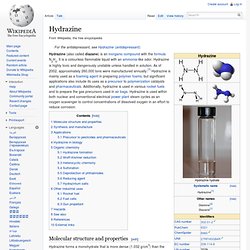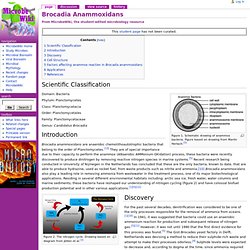

Metagenome Analysis of a Complex Community Reveals the Metabolic Blueprint of Anammox Bacterium “Candidatus Jettenia asiatica” Hydrazine Synthase, a Unique Phylomarker with Which To Study the Presence and Biodiversity of Anammox Bacteria. For a long time, the anaerobic oxidation of ammonium (anammox) was assumed to be impossible biochemistry, until its occurrence was predicted by Broda (2) and the process was discovered in a wastewater treatment plant 20 years later in Delft, The Netherlands (27).

The observed ammonium and nitrate losses under anoxic conditions were the starting point for elucidating the key player of this process (42) and revealing the contribution of anammox to the global nitrogen cycle (for a review, see reference 13). Enrichments in sequencing batch reactors followed by 16S rRNA analyses showed that all anammox bacteria belong to the same monophyletic order, named the Brocadiales, and are related to the Planctomycetales (14).
Both 16S rRNA and lipid biomarkers were developed to detect anammox bacteria in the environment and wastewater treatment systems (21, 29, 33, 36, 37). Here we describe the development of PCR primer sets to target this new unique functional hzsA biomarker for anammox bacteria. Information on EC 1.7.99.8 - hydrazine oxidoreductase. Hydrazine synthase subunit A - Candidatus Brocadia anammoxidans. Anemmox metabolism. Brocadia annamoxidan. Hydrazine. Molecular structure and properties[edit] Hydrazine forms a monohydrate that is more dense (1.032 g/cm3) than the anhydrous material.

Hydrazine can arise via coupling a pair of ammonia molecules by removal of one hydrogen per molecule. Each H2N-N subunit is pyramidal in shape. The N-N distance is 1.45 Å (145 pm), and the molecule adopts a gauche conformation.[8] The rotational barrier is twice that of ethane. These structural properties resemble those of gaseous hydrogen peroxide, which adopts a "skewed" anticlinal conformation, and also experiences a strong rotational barrier. with the values:[9] Kb = 1.3 x 10−6 pKa = 8.1 (for ammonia Kb = 1.78 x 10−5) Hydrazine is difficult to diprotonate:[10] [N2H5]+ + H2O → [N2H6]2+ + OH− Kb = 8.4 x 10−16 The heat of combustion of hydrazine in oxygen (air) is 1.941 x 107 J/kg (9345 BTU/lb).[11] Synthesis and manufacture[edit] Theodor Curtius synthesized free hydrazine for the first time in 1889 via a circuitous route.[12] NH2Cl + NH3 → H2N-NH2 + HCl.
Nitrogen cycle. Bacteria Eat Human Sewage, Produce Rocket Fuel. November 9, 2005 The high cost of treating human wastewater may one day tank thanks to a bacterium that eats ammonia and produces rocket fuel.

Standard water treatment plants use oxygen-hungry bacteria to break down human waste. To feed the microbes, plants must aerate sewage sludge with costly, power-hogging equipment. But Brocadia anammoxidans, or anammox bacteria, survive without oxygen, producing energy from nitrite and ammonia, which is found naturally in human waste. "Conventional [bacteria] treatments do a good job, so the big benefit is doing this much more efficiently and cheaply," said Marc Strous, a microbiologist at the University of Nijmegen in the Netherlands.
Strous says savings could be enormous, up to 90 percent versus standard sewage treatment plants. Rocket Fuel Scientists first discovered anammox bacteria in yeast and later in the open ocean in the late 1990s. The unusual microbes consume ammonia, producing hydrazine—better known as rocket fuel—in the process. Brocadia Anammoxidans. Figure 1.

Schematic drawing of anammox bacteria. Figure based on drawing from Martin Hertach.[5] Domain: Bacteria Phylum: Planctomycetes Class: Planctomycetacia Order: Planctomycetales.